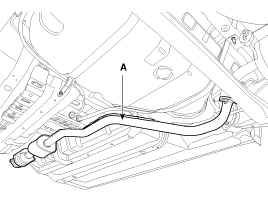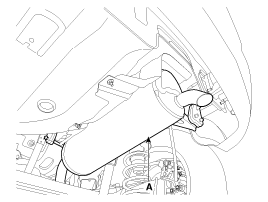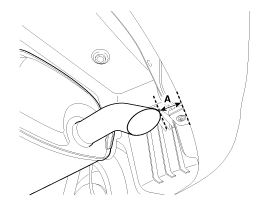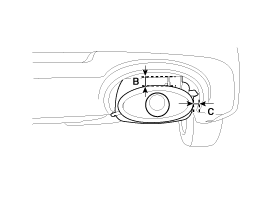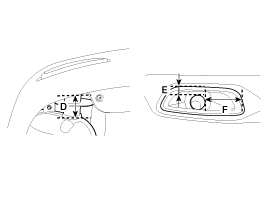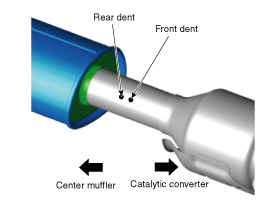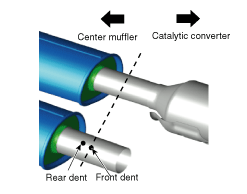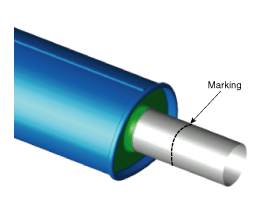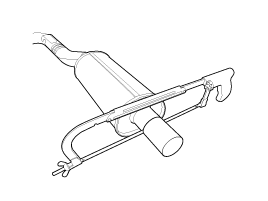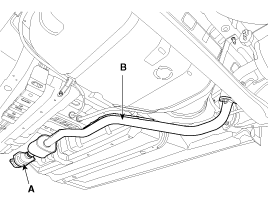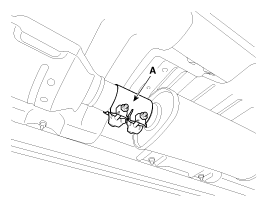 Kia Rio: Muffler: Removal and Installation
Kia Rio: Muffler: Removal and Installation
| 1. |
Disconnect the battery negative terminal.
|
| 2. |
Disconnect the rear oxygen sensor connector (A).
|
| 3. |
Remove the front muffler (A).
|
| 4. |
Remove the center muffler (A).
|
| 5. |
Remove the main muffler (A).
|
| 6. |
Installation is the reverse order of removal.
|
Replacement procedure of center muffler using clamp
Under warranty : Replace the center muffler assembly.
Out of warranty : It is available to replace the center muffler as the
procedure below.
| 1. |
Check that the clamping part of the center muffler assembly is
damaged or deformed.
If the muffler is too corroded to clamp, replace the center muffler
assembly.
|
| 2. |
Record the gap (A, B, C, D, E, F) between the tail pipe (or tail
trim) and the rear bumper.
[Pipe type]
[Trim type]
[Bumper-integrated trim type]
|
| 3. |
Remove the catalytic converter & center muffler (A).
|
| 4. |
Cut the center muffler as the instruction below.
[With dent]
[Without dent]
[A/S muffler]
|
| 5. |
Install the center muffler.
|
 Muffler: Components
Muffler: Components
1. Front muffler
2. Catalytic converter & Center muffler assembly
3. Main muffler
4. Gasket
5. Hanger
...
See also:
TPMS Receiver Description
1.
Mode
(1)
Virgin State
A.
The receiver as a sole part is shipped in this
state. ...
Wiper blades
Blade inspection
Commercial hot waxes applied by automatic car washes have been known to make
the windshield difficult to clean.
Contamination of either the windshield or the wiper blades with f ...
Radiator: Components
1. Cooling fan & reservoir tank assembly
2. Radiator lower hose
3. Air guard
4. Upper cover
5. Radiator upper hose
6. Filler neck
...
Copyright © www.kirmanual.com 2014-2025



